Verdict
The Xiaomi Smart Band 8 Pro is a solid and budget-friendly tracker offering a comprehensive set of features within a sleek, unisex design. Xiaomi’s Mi Fitness platform still lacks crucial context and fumbles advanced metrics, but the value on offer here means this is an easy package to recommend.
Pros
- Friendly, unisex design
- Excellent battery life
- Accurate GPS tracking
Cons
- Mixed HR accuracy
- Mi Fitness lags behind rivals
- No side button hampers navigation
-
Long-lasting battery lifeXiaomi claims the Smart Band 8 Pro can last six days in AOD mode; or 14 days of less-intensive use -
GNSS tracking for outdoor workoutsBuilt-in GPS ensures the Smart Band 8 Pro can register your position even without your phone being in range -
Improved UI and refresh rateXiaomi has added widgets to the Smart Band 8 Pro interface and upped the refresh rate to 60Hz to help deliver smoother transitions
Introduction
Xiaomi’s Smart Band 8 Pro has begun its global tour after initially launching in China, and the upgrade to last year’s effort promises plenty.
Packing a bigger display, a longer battery life, and an updated, widget-packed interface – all for around £60 – it’s a tantalizing prospect on paper for those hunting for the best budget fitness tracker.
But does it offer enough of a jump compared to the standard Xiaomi Band 8, or last year’s 7 Pro?
Design and screen
- AMOLED display with improved, 60Hz refresh rate
- 5ATM water resistance rating
- No-button case design
I would often categorize Xiaomi’s Pro lineup of bands as fitness trackers, but, in truth, they really blur the line between traditional activity bands and modern smartwatches in terms of design and functionality.
It’s a form factor that has become increasingly popular in recent years, with the 8 Pro akin to the likes of the Huawei Band 8 and Samsung Galaxy Fit 3. I think it’s an approach that works, too – this hybrid-style design is more unisex than slim activity bands yet not round enough to really be viewed as a smartwatch.
Xiaomi has also made notable improvements with the Band 8 Pro. It’s slightly larger, now boasting a 1.74-inch display compared to its predecessor’s 1.63 inches. And this increase in size, with the case expanding to 46 x 33.35 x 9.99mm, is accompanied by a significant upgrade in refresh rate – from 30Hz to 60Hz. This contributes to a noticeably smoother user experience, and it elevates the overall feel of the device.
While eagle-eyed fans will spot that the display sits a bit flatter than the Band 7 Pro, the overall feel remains largely unchanged. Its lightweight construction ensures comfort during extended wear and sleep tracking, and the glossy trim of the plastic case adds a touch of sophistication (even if this is a bit lacking in the actual on-wrist feel).
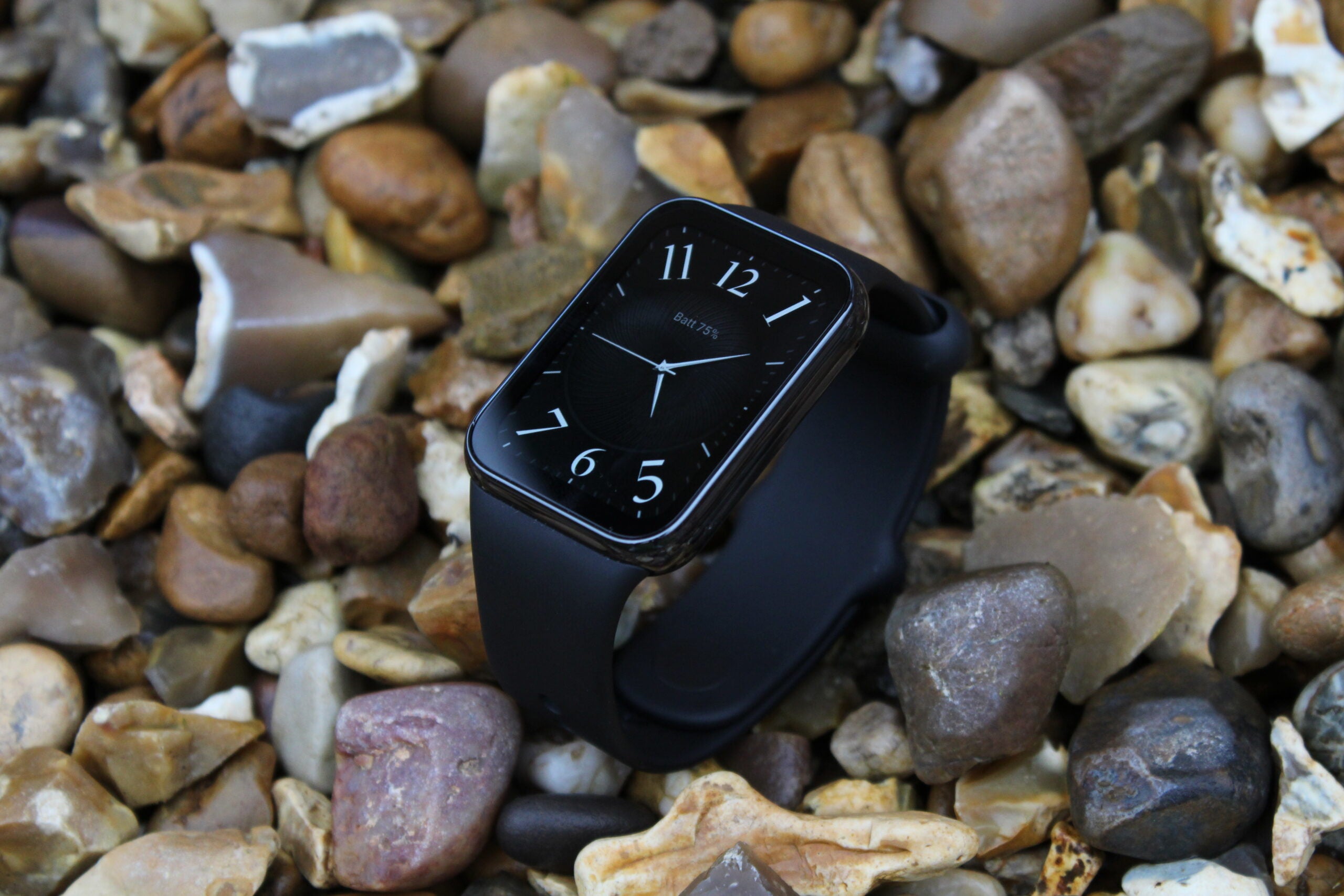
However, a notable design flaw is the absence of any physical buttons – just as it was in last year’s edition. It results in a total reliance on swiping for navigation, which can be cumbersome when you’re deep in the 8 Pro’s menus or tracking activity.
There are other minor drawbacks, as well, like the limited detail of certain watch faces in the always-on display (AOD) mode and the somewhat inconsistent performance of the raise-to-wake function. While these issues are relatively insignificant, they underscore the distinctions between the Band 8 Pro and pricier smartwatches.
I still very much like the design here, though – and, like with most things with the Band 8 Pro, it’s difficult to complain too much when the £59.99 price is this low.
Software
- Improved UI with widgets
- Works with iOS or Android
- Limited apps and smart features
The upgraded display refresh rate significantly enhances the overall user experience of the Band 8 Pro, but there are also Xiaomi’s new operating system additions that enhance the useability.
The tracker still runs on the same OS, but there are now several convenient widgets that allow users to quickly access and review key statistics, adjust settings, control music playback, and more.
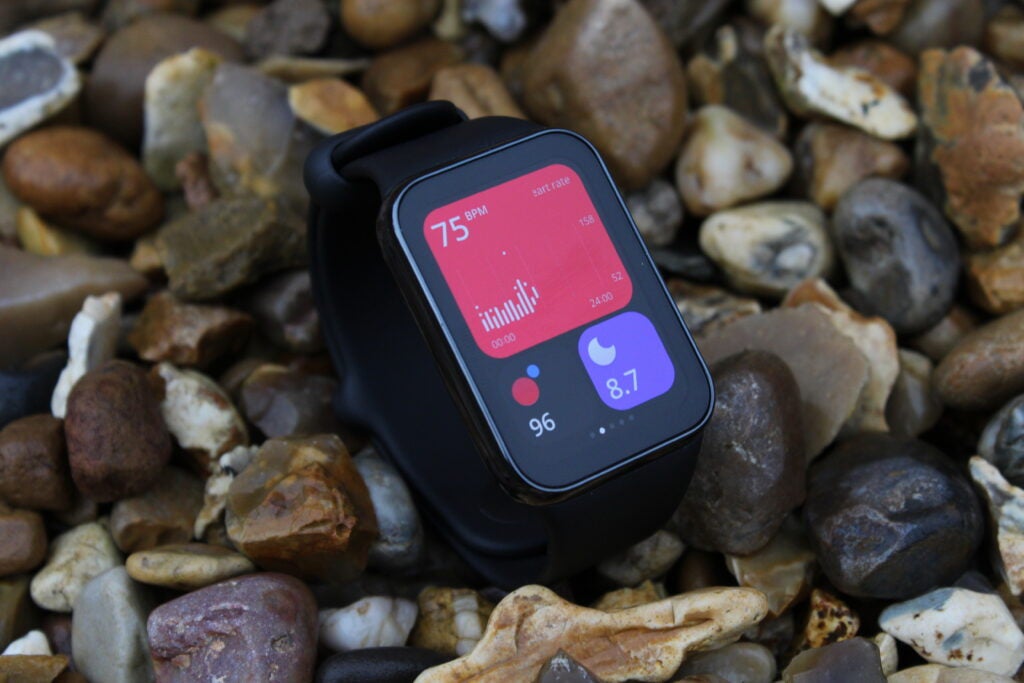
These screens help allay some of the issues inherent in the Band 8 Pro’s button-less design, although the absence of a physical button remains a point of contention. You also can’t edit them from the device itself, which feels a bit of an odd decision from Xiaomi.
Aside from this, there are minimal changes, and the range of smart features remains pretty bare. You get the classics – notification support, calendar integration, music control and weather mirroring when you’re in range of your iOS or Android phone – and basic features like a phone-finding function, timers, alarms, and a flashlight, but not much else.
Advanced, smartwatch-like features like payment support, mapping, offline music playback, cellular connectivity, and third-party app integrations remain absent.
While these omissions are understandable given the device’s price point – and also some practical reasons like Xiaomi not having a framework for international contactless payments on wearables – those seeking a comprehensive smart experience will want to explore other options.
Sports tracking
- Single-frequency GNSS tracking is solid
- Heart monitoring underperforms
- Most advanced insights are wide of the mark
My experience with Xiaomi’s fitness tracking is generally quite varied, and this theme holds for the Band 8 Pro. It’s a step up from the issues present in the standard Smart Band 8, but some stark negatives remain.
The Band 8 Pro is similar to its predecessor in offering reliable tracking for basic tracking metrics such as step counting and calorie burn estimations. Despite steps being consistently lower by approximately 1000 compared to other devices, the calorie burn estimates show closer alignment with tracked data on a Garmin Epix Pro (Gen 2), often falling within 100-200kcal of expected values.
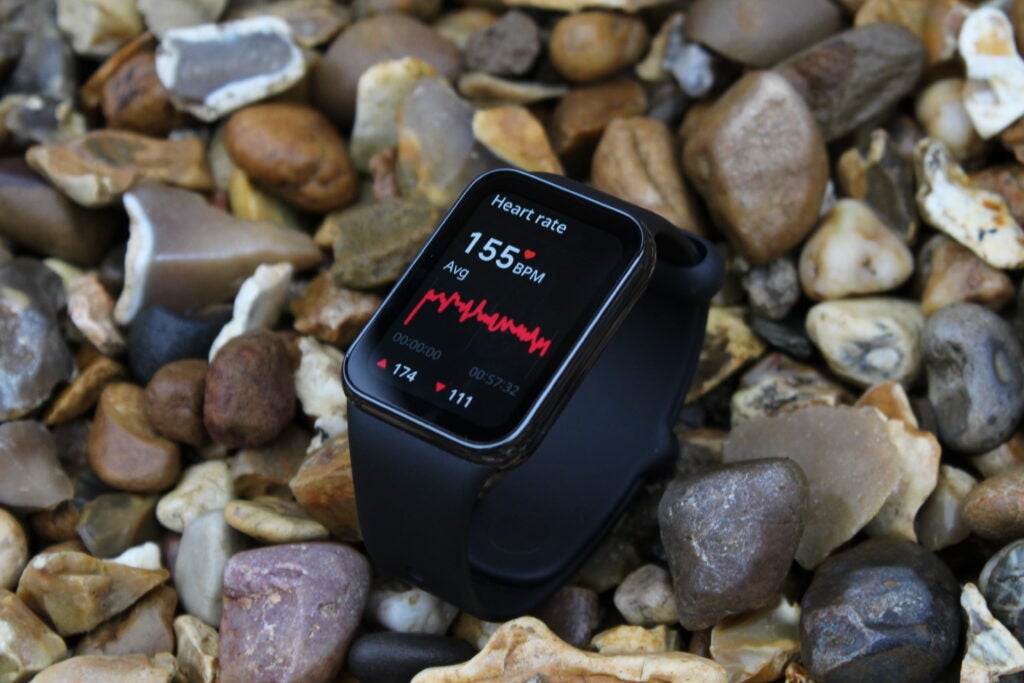
Daytime and resting heart rate tracking appear reliable, too, showing minimal deviations from baseline readings. However, the accuracy of more advanced tracking insights, including training effect, VO2 max, and recovery hours, remains questionable.
For instance, prolonged runs with a low average heart rate may prompt recovery hour estimations of up to 80-100 hours, while my VO2 max estimate is notably lower than recorded by other wearables.
Although cadence and stride length data from my test runs seem accurate, heart rate monitoring performance during workouts remains problematic.
The Band 8 Pro tends to underreport average BPM readings compared to our Garmin HRM-Pro Plus chest strap, with the odd instance of overreporting, as well.
Despite the shortcomings, though, the GPS tracking performance of the Band 8 Pro was actually pretty solid. Despite only featuring basic built-in GNSS support, not dual-frequency, the device demonstrates rapid lock-on times – and the distance estimations are comparable to a top-of-the-line sports watch like the Epix Pro (Gen 2).
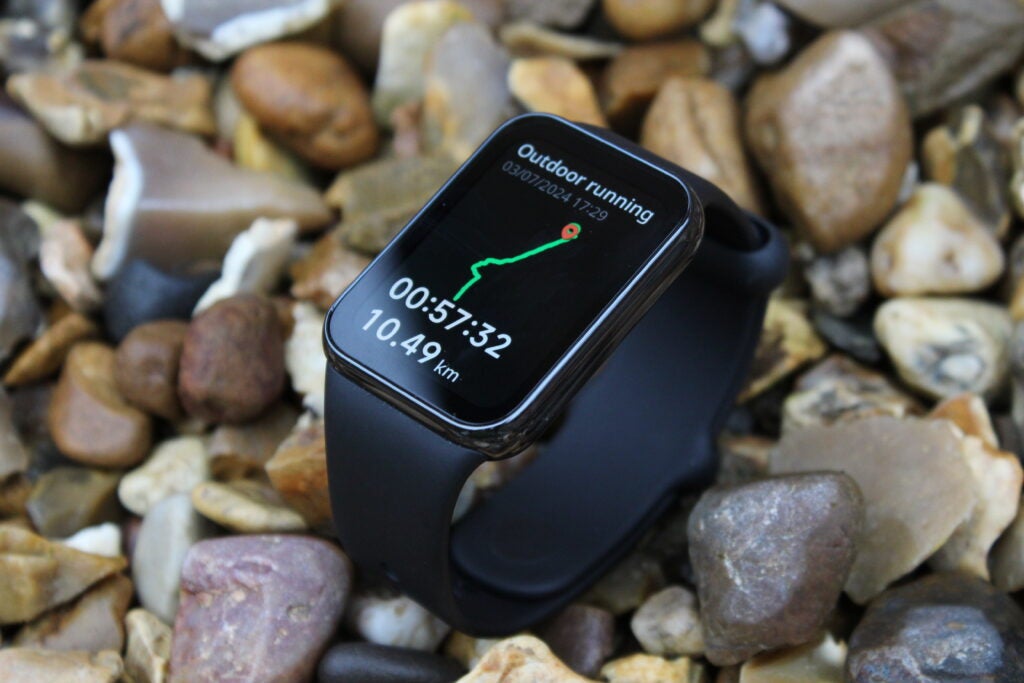
It’s still liable to underreport distances, but the overall accuracy of GPS tracking is good enough for most users; most runs fall within a negligible discrepancy of 150m.
Xiaomi still won’t allow you to switch from kilometers to miles, though, which some will definitely find frustrating.
Health tracking
- Lack of actionable insights in Mi Fitness
- Reliable blood oxygen monitoring
- Most features turned off by default
The Band 8 Pro falls short of being classified as a health-tracking powerhouse, though, oddly, not because Xiaomi is stingy with sensors or features.
The company adopts a battery-conscious approach to health tracking, keeping most features – including the SpO2 monitoring and high/low heart rate notifications – disabled by default. However, as I found throughout testing, these features don’t really have much of an effect on battery life and they’re also encouragingly accurate.
The Band 8 Pro’s SpO2 readings consistently align with data from a Whoop 4.0, Oura Ring (Gen 3), and Garmin, while all-day heart rate monitoring functions well, too.
Mostly, the health-tracking capabilities are limited here due to Xiaomi’s minimal effort in providing interpretation or actionable insights from the data.
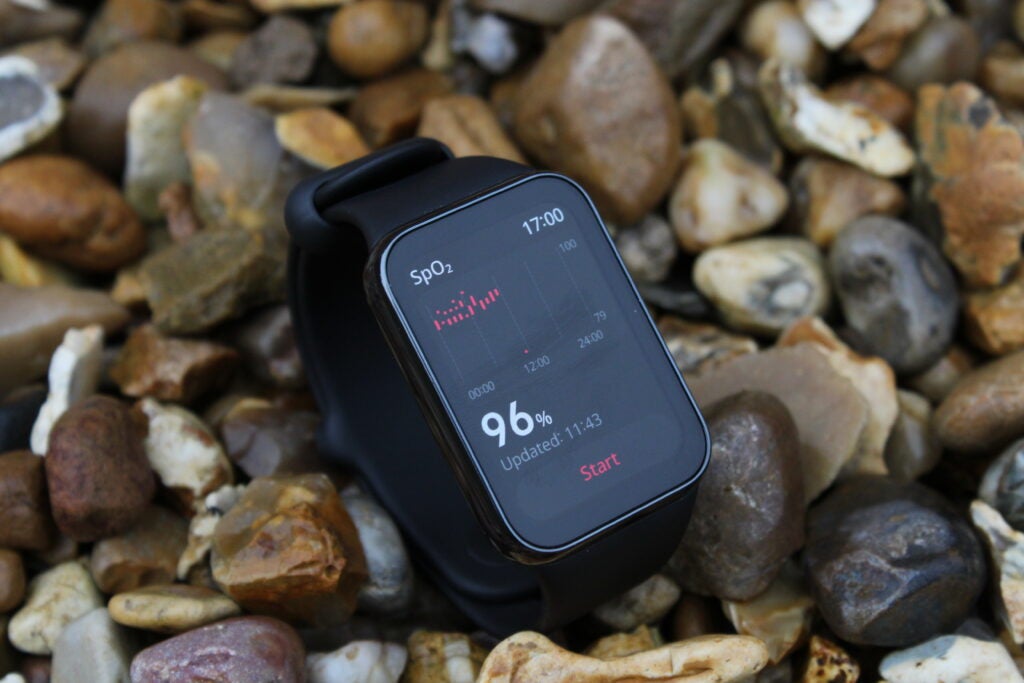
While users can access past health data within the Mi Fitness app, just as they would in Apple Health or Google Fit, there is a real lack of trend analysis or proactive guidance. For instance, stress tracking and temperature readings are available, but both lack any accompanying prompts or specialized features (like women-focused tracking).
For those seeking a more in-depth health tracking experience, Fitbit still leads the way in this area.
Sleep tracking
- Insights are limited
- Advanced monitoring is turned off by default
- Time asleep times are generally accurate
Similar to many features of the Band 8 Pro, advanced sleep monitoring is initially disabled, requiring users to manually enable it to access sleep stage information and sleep scores.
During my testing period with this advanced sleep monitoring, though, results were generally positive and largely mirrored what was found with the Xiaomi Smart Band 8.
The tracker consistently recorded sleep onset and waking times within roughly a 10-minute window compared to Garmin, Whoop, and Oura.
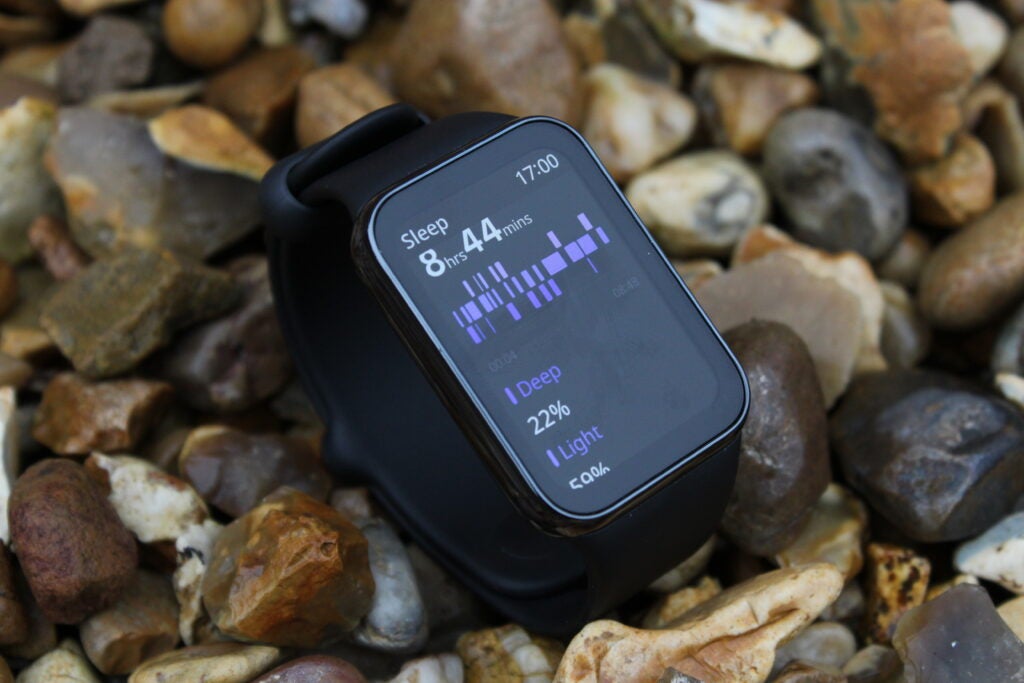
However, my confidence in the accuracy of sleep stage estimations isn’t quite as solid, with Xiaomi still refusing to account for any awake time during the night.
And, like with health tracking features, insights like average sleep heart rate and breathing score just aren’t fully developed, despite being good on-paper inclusions.
If you’re looking for sleep-tracking basics, the Band 8 Pro is more than good enough – but those who want to view sleep in the wider context of overall health, or discover how last night’s slumber stacks up against recent trends, will want to consider other devices.
Battery life
- Will last 4-6 days with AOD turned on
- Battery modes and feature control allow flexibility
- Charging takes around 60-80 minutes
The Band 8 Pro features a larger battery capacity than its predecessor, and I did see some decent gains in our tests.
With the Band 7 Pro’s 235mAh unit upgraded to 285mAh, Xiaomi claims an extended battery life of up to 14 days under ‘normal’ usage conditions, surpassing the previous 12-day estimate.
Consistent with my experience with last year’s model, achieving this battery longevity is certainly feasible when you stick with the default settings and don’t activate features such as SpO2 monitoring or the AOD.
While many wearables offer similar caveated battery performance claims, Xiaomi deserves credit for maintaining impressive battery life even with most of these features enabled.
Throughout the testing period, I opted to use the AOD feature alongside advanced sleep monitoring, heart rate notifications, nighttime respiratory tracking, and overnight blood oxygen monitoring. The display was also scheduled between 07:00-22:00.
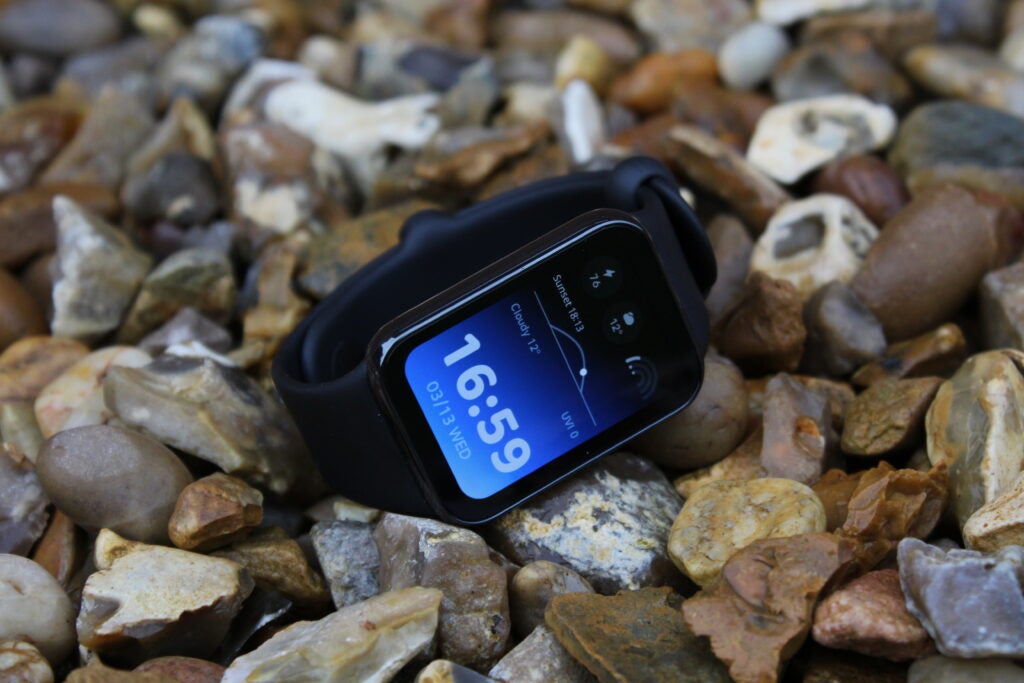
Even with this combination of features active, daily battery drain remained modest at approximately 20-25%. This also included regular GPS usage throughout the battery cycle – sometimes for 90-120 minutes at a time.
It’s very good going, even if the Band 8 Pro is less power-hungry than a typical smartwatch.
Latest deals
Should you buy it?
If you want an affordable, feature-packed fitness tracker
It’s tough to find a tracker that provides a better breadth of features for such little outlay.
If you want reliable insights or advanced features
While it covers plenty of ground, the data can’t always be trusted and features are still relatively basic.
Final Thoughts
Xiaomi casts the net wide with the Smart Band 8 Pro, promising plenty of features in an attractive and affordable package.
Some of what’s offered works well – like GPS tracking and basic activity tracking – but there’s also a lack of depth to insights and a lack of reliability in more advanced features that limits the appeal here.
It’s still a great option to consider on a budget, but you do get what you pay for in a lot of areas when compared to the very best fitness trackers.
How we test
We thoroughly test every smartwatch we review. We use industry-standard testing to compare features properly and we use the watch as our main device over the review period. We’ll always tell you what we find and we never, ever, accept money to review a product.
Worn as our main tracker during the testing period
Thorough health and fitness tracking testing
FAQs
No, mobile payments are not supported.
Verdict
The Xiaomi Smart Band 8 Pro is a solid and budget-friendly tracker offering a comprehensive set of features within a sleek, unisex design. Xiaomi’s Mi Fitness platform still lacks crucial context and fumbles advanced metrics, but the value on offer here means this is an easy package to recommend.
Pros
- Friendly, unisex design
- Excellent battery life
- Accurate GPS tracking
Cons
- Mixed HR accuracy
- Mi Fitness lags behind rivals
- No side button hampers navigation
-
Long-lasting battery lifeXiaomi claims the Smart Band 8 Pro can last six days in AOD mode; or 14 days of less-intensive use -
GNSS tracking for outdoor workoutsBuilt-in GPS ensures the Smart Band 8 Pro can register your position even without your phone being in range -
Improved UI and refresh rateXiaomi has added widgets to the Smart Band 8 Pro interface and upped the refresh rate to 60Hz to help deliver smoother transitions
Introduction
Xiaomi’s Smart Band 8 Pro has begun its global tour after initially launching in China, and the upgrade to last year’s effort promises plenty.
Packing a bigger display, a longer battery life, and an updated, widget-packed interface – all for around £60 – it’s a tantalizing prospect on paper for those hunting for the best budget fitness tracker.
But does it offer enough of a jump compared to the standard Xiaomi Band 8, or last year’s 7 Pro?
Design and screen
- AMOLED display with improved, 60Hz refresh rate
- 5ATM water resistance rating
- No-button case design
I would often categorize Xiaomi’s Pro lineup of bands as fitness trackers, but, in truth, they really blur the line between traditional activity bands and modern smartwatches in terms of design and functionality.
It’s a form factor that has become increasingly popular in recent years, with the 8 Pro akin to the likes of the Huawei Band 8 and Samsung Galaxy Fit 3. I think it’s an approach that works, too – this hybrid-style design is more unisex than slim activity bands yet not round enough to really be viewed as a smartwatch.
Xiaomi has also made notable improvements with the Band 8 Pro. It’s slightly larger, now boasting a 1.74-inch display compared to its predecessor’s 1.63 inches. And this increase in size, with the case expanding to 46 x 33.35 x 9.99mm, is accompanied by a significant upgrade in refresh rate – from 30Hz to 60Hz. This contributes to a noticeably smoother user experience, and it elevates the overall feel of the device.
While eagle-eyed fans will spot that the display sits a bit flatter than the Band 7 Pro, the overall feel remains largely unchanged. Its lightweight construction ensures comfort during extended wear and sleep tracking, and the glossy trim of the plastic case adds a touch of sophistication (even if this is a bit lacking in the actual on-wrist feel).

However, a notable design flaw is the absence of any physical buttons – just as it was in last year’s edition. It results in a total reliance on swiping for navigation, which can be cumbersome when you’re deep in the 8 Pro’s menus or tracking activity.
There are other minor drawbacks, as well, like the limited detail of certain watch faces in the always-on display (AOD) mode and the somewhat inconsistent performance of the raise-to-wake function. While these issues are relatively insignificant, they underscore the distinctions between the Band 8 Pro and pricier smartwatches.
I still very much like the design here, though – and, like with most things with the Band 8 Pro, it’s difficult to complain too much when the £59.99 price is this low.
Software
- Improved UI with widgets
- Works with iOS or Android
- Limited apps and smart features
The upgraded display refresh rate significantly enhances the overall user experience of the Band 8 Pro, but there are also Xiaomi’s new operating system additions that enhance the useability.
The tracker still runs on the same OS, but there are now several convenient widgets that allow users to quickly access and review key statistics, adjust settings, control music playback, and more.

These screens help allay some of the issues inherent in the Band 8 Pro’s button-less design, although the absence of a physical button remains a point of contention. You also can’t edit them from the device itself, which feels a bit of an odd decision from Xiaomi.
Aside from this, there are minimal changes, and the range of smart features remains pretty bare. You get the classics – notification support, calendar integration, music control and weather mirroring when you’re in range of your iOS or Android phone – and basic features like a phone-finding function, timers, alarms, and a flashlight, but not much else.
Advanced, smartwatch-like features like payment support, mapping, offline music playback, cellular connectivity, and third-party app integrations remain absent.
While these omissions are understandable given the device’s price point – and also some practical reasons like Xiaomi not having a framework for international contactless payments on wearables – those seeking a comprehensive smart experience will want to explore other options.
Sports tracking
- Single-frequency GNSS tracking is solid
- Heart monitoring underperforms
- Most advanced insights are wide of the mark
My experience with Xiaomi’s fitness tracking is generally quite varied, and this theme holds for the Band 8 Pro. It’s a step up from the issues present in the standard Smart Band 8, but some stark negatives remain.
The Band 8 Pro is similar to its predecessor in offering reliable tracking for basic tracking metrics such as step counting and calorie burn estimations. Despite steps being consistently lower by approximately 1000 compared to other devices, the calorie burn estimates show closer alignment with tracked data on a Garmin Epix Pro (Gen 2), often falling within 100-200kcal of expected values.

Daytime and resting heart rate tracking appear reliable, too, showing minimal deviations from baseline readings. However, the accuracy of more advanced tracking insights, including training effect, VO2 max, and recovery hours, remains questionable.
For instance, prolonged runs with a low average heart rate may prompt recovery hour estimations of up to 80-100 hours, while my VO2 max estimate is notably lower than recorded by other wearables.
Although cadence and stride length data from my test runs seem accurate, heart rate monitoring performance during workouts remains problematic.
The Band 8 Pro tends to underreport average BPM readings compared to our Garmin HRM-Pro Plus chest strap, with the odd instance of overreporting, as well.
Despite the shortcomings, though, the GPS tracking performance of the Band 8 Pro was actually pretty solid. Despite only featuring basic built-in GNSS support, not dual-frequency, the device demonstrates rapid lock-on times – and the distance estimations are comparable to a top-of-the-line sports watch like the Epix Pro (Gen 2).

It’s still liable to underreport distances, but the overall accuracy of GPS tracking is good enough for most users; most runs fall within a negligible discrepancy of 150m.
Xiaomi still won’t allow you to switch from kilometers to miles, though, which some will definitely find frustrating.
Health tracking
- Lack of actionable insights in Mi Fitness
- Reliable blood oxygen monitoring
- Most features turned off by default
The Band 8 Pro falls short of being classified as a health-tracking powerhouse, though, oddly, not because Xiaomi is stingy with sensors or features.
The company adopts a battery-conscious approach to health tracking, keeping most features – including the SpO2 monitoring and high/low heart rate notifications – disabled by default. However, as I found throughout testing, these features don’t really have much of an effect on battery life and they’re also encouragingly accurate.
The Band 8 Pro’s SpO2 readings consistently align with data from a Whoop 4.0, Oura Ring (Gen 3), and Garmin, while all-day heart rate monitoring functions well, too.
Mostly, the health-tracking capabilities are limited here due to Xiaomi’s minimal effort in providing interpretation or actionable insights from the data.

While users can access past health data within the Mi Fitness app, just as they would in Apple Health or Google Fit, there is a real lack of trend analysis or proactive guidance. For instance, stress tracking and temperature readings are available, but both lack any accompanying prompts or specialized features (like women-focused tracking).
For those seeking a more in-depth health tracking experience, Fitbit still leads the way in this area.
Sleep tracking
- Insights are limited
- Advanced monitoring is turned off by default
- Time asleep times are generally accurate
Similar to many features of the Band 8 Pro, advanced sleep monitoring is initially disabled, requiring users to manually enable it to access sleep stage information and sleep scores.
During my testing period with this advanced sleep monitoring, though, results were generally positive and largely mirrored what was found with the Xiaomi Smart Band 8.
The tracker consistently recorded sleep onset and waking times within roughly a 10-minute window compared to Garmin, Whoop, and Oura.

However, my confidence in the accuracy of sleep stage estimations isn’t quite as solid, with Xiaomi still refusing to account for any awake time during the night.
And, like with health tracking features, insights like average sleep heart rate and breathing score just aren’t fully developed, despite being good on-paper inclusions.
If you’re looking for sleep-tracking basics, the Band 8 Pro is more than good enough – but those who want to view sleep in the wider context of overall health, or discover how last night’s slumber stacks up against recent trends, will want to consider other devices.
Battery life
- Will last 4-6 days with AOD turned on
- Battery modes and feature control allow flexibility
- Charging takes around 60-80 minutes
The Band 8 Pro features a larger battery capacity than its predecessor, and I did see some decent gains in our tests.
With the Band 7 Pro’s 235mAh unit upgraded to 285mAh, Xiaomi claims an extended battery life of up to 14 days under ‘normal’ usage conditions, surpassing the previous 12-day estimate.
Consistent with my experience with last year’s model, achieving this battery longevity is certainly feasible when you stick with the default settings and don’t activate features such as SpO2 monitoring or the AOD.
While many wearables offer similar caveated battery performance claims, Xiaomi deserves credit for maintaining impressive battery life even with most of these features enabled.
Throughout the testing period, I opted to use the AOD feature alongside advanced sleep monitoring, heart rate notifications, nighttime respiratory tracking, and overnight blood oxygen monitoring. The display was also scheduled between 07:00-22:00.

Even with this combination of features active, daily battery drain remained modest at approximately 20-25%. This also included regular GPS usage throughout the battery cycle – sometimes for 90-120 minutes at a time.
It’s very good going, even if the Band 8 Pro is less power-hungry than a typical smartwatch.
Latest deals
Should you buy it?
If you want an affordable, feature-packed fitness tracker
It’s tough to find a tracker that provides a better breadth of features for such little outlay.
If you want reliable insights or advanced features
While it covers plenty of ground, the data can’t always be trusted and features are still relatively basic.
Final Thoughts
Xiaomi casts the net wide with the Smart Band 8 Pro, promising plenty of features in an attractive and affordable package.
Some of what’s offered works well – like GPS tracking and basic activity tracking – but there’s also a lack of depth to insights and a lack of reliability in more advanced features that limits the appeal here.
It’s still a great option to consider on a budget, but you do get what you pay for in a lot of areas when compared to the very best fitness trackers.
How we test
We thoroughly test every smartwatch we review. We use industry-standard testing to compare features properly and we use the watch as our main device over the review period. We’ll always tell you what we find and we never, ever, accept money to review a product.
Worn as our main tracker during the testing period
Thorough health and fitness tracking testing
FAQs
No, mobile payments are not supported.
























